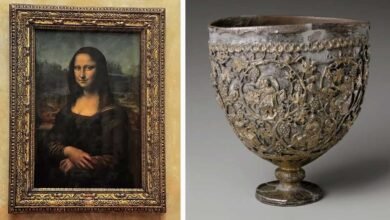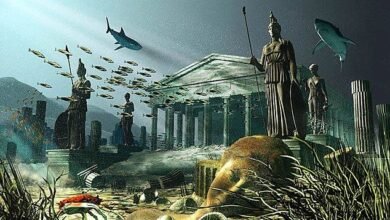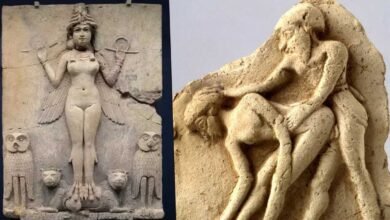The Enigmatic Tarim Mummies: Unraveling Ancient Genetic Connections

One of the “Tarim mummies,” the naturally-desiccated remains of people found in the Xinjiang-Uyghur region of China. They are now found to be related to Native Americans and Siberian peoples. Credit: Hiroki Ogawa/CC BY 3.0
Nestled in the vast desert of China’s Xinjiang region, the Tarim Basin has yielded a captivating secret – the Tarim mummies. Discovered in the early 20th century, these mummies have perplexed scientists for decades, challenging our understanding of ancient migrations and civilizations.
Recent DNA studies have overturned long-held beliefs about these enigmatic remains. Contrary to earlier assumptions, these Bronze Age mummies are not descendants of Indo-Europeans from the West. Instead, they share genetic markers with people from Siberia and even Native Americans, reshaping our understanding of their origins.
Intriguingly, the DNA sequencing revealed that these mummies were not outsiders who migrated to the region. They were genetically connected to the very land where they were interred – the deserts of western China. These findings have shattered the prevailing narrative that linked them to Indo-European branches.
Buried in boat-like coffins, adorned with upright wooden stakes resembling oars, the Tarim mummies offer a tantalizing glimpse into a unique culture. Long thought to be part of the Indo-European tapestry, they now stand as a genetically isolated group with no immediate kinship to nearby populations.
The Tarim Basin, once a verdant oasis, housed these ancient individuals along riverbanks over four millennia ago. Their wooden coffins, covered in cowhide, have preserved their remains despite the changing climate. While over 300 people were once interred in the Bronze Age cemetery, looting and time have eroded some of its tombs.

The “Xiaohe Mummy”, exhibited in Xinjiang Museum, is one of the oldest Tarim mummies, dating more than 3800 years ago. Another mummy from the same place is the “Princess of Xiaohe“. CC BY 3.0
Historians and archaeologists alike have been captivated by the mysteries of these mummies. Their presence challenges our assumptions and underscores the complexity of ancient civilizations. As anthropologist Christina Warinner notes, the Tarim mummies have been “unique, puzzling, or contradictory” in many aspects, inviting further research and exploration.
The discovery of the Tarim mummies demonstrates that history is a dynamic field, subject to reevaluation and revision based on new evidence. The revelations brought about by DNA studies propel us to rethink the connections between ancient cultures and challenge us to embrace a more nuanced understanding of the past.

Burial XHM66 from Xiaohe cemetery, with boat-shaped coffin and mummified remains dressed in woollen garments.CC BY-SA 4.0
In essence, the Tarim mummies embody the ever-evolving nature of our understanding of history. Their story serves as a testament to the power of scientific inquiry and the resilience of the human spirit in unraveling the mysteries of our ancestors. As we continue to uncover their secrets, we are reminded that the past is an intricate tapestry waiting to be discovered, one strand at a time.

People with light hair and eyes are pictured in a sixth century AD fresco from Xinjiang, China. “Tocharian Princes” from the Cave of the Sixteen Sword-Bearers, Qizil, Tarim Basin, Xinjiang, China. Carbon 14 date: 432–538 AD. Original in Museum für Indische Kunst, Berlin.Credit: Unknown/Public Domain




